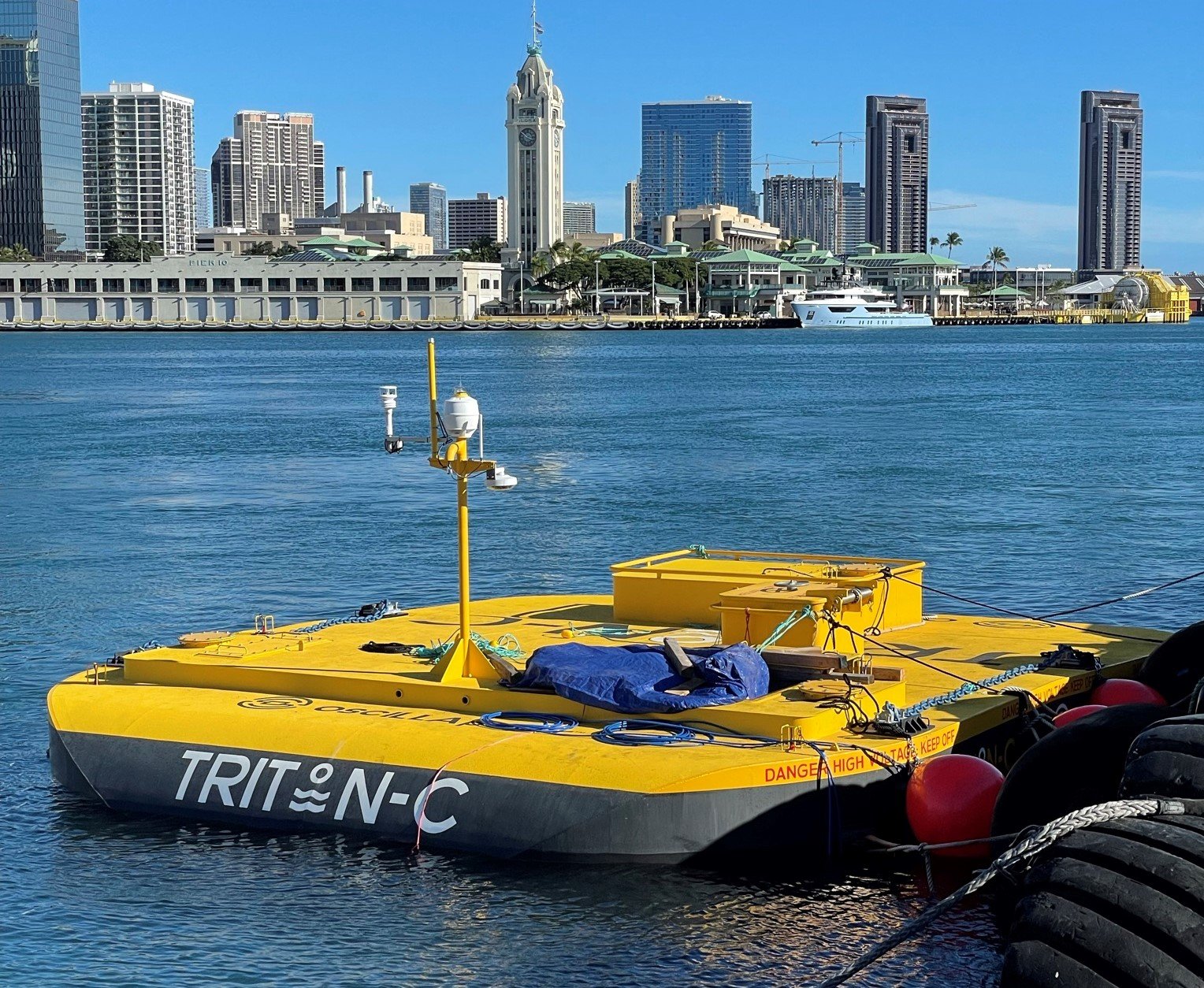With more than 70 percent of the Earth's surface covered by water, waves hold enormous potential as a large-scale source of renewable energy. Realizing the tremendous potential for wave power to significantly change the way we generate energy, Oscilla Power began developing a sustainable and reliable wave energy converter (WEC) that could economically tap into this resource. Currently, Oscilla Power is working on two versions of its WEC – the Triton-C, a 100-kW-rated system designed for remote communities or small coastal facilities, and the Triton – a larger, 1 MW-rated system designed for large arrays that can provide utility-scale power.

To determine the best option for a dependable, fast control system for its WEC, Oscilla Power reached out to our experts at Applied Control Engineering (ACE). We began working on this multi-phase project together a number of years ago by partnering to work on the definition of the control system requirements for the base architecture. First, this initial non-lab prototype needed to function reliably while unattended in a rough ocean environment. Additionally, due to the offshore location, the control system needed to offer remote monitoring and control and high-speed, consistent data transfer and communication to the onshore monitoring facility. Finally, since the control system is just one of many components that must fit on the float, weight and physical size were also key factors. To balance all these requirements, we selected the Siemens S7 platform with Totally Integrated Automation Portal (TIA Portal) and WinCC RunTime Professional.
Next, we developed the control system design package and configuration for the Triton-C. By using TIA Portal, we could easily manage the development of the Siemens S7 control system and design of the WinCC front end with a single system. The TIA Portal also offered seamless integration between the PLC and the Siemens Motor Control Center (MCC) by providing the ability to configure the motors, HMI, and PLC within the same platform.
Beyond these control and monitoring functions, we also set up interfaces for TIA Portal to communicate to the following external systems:
- A Speedgoat real-time hardware simulation machine via MODBUS
- A GPS system to make sure the float is correctly positioned via MODBUS
- A system to monitor the health of the primary capacitor bank via CANbus
- Win911 alert system via wireless/cellular data
Currently, we are assisting Oscilla Power with the commissioning of the Triton-C, which will be tested in Hawaii starting in the first quarter of 2022. Additionally, throughout this year-long trial of the Triton-C prototype, we will continue to provide remote support to bring the system online by performing final system checks and integrating the communications to different pieces of the system as they are installed and powered up, including the MCC, GPS, and the primary capacitor bank.
Once this prototype deployment is complete, we will continue to work with Oscilla Power to develop the larger 1MW Triton, which is expected to be based upon the same framework described here for the Triton-C. Our priority is, and will always be, ensuring Oscilla Power’s WEC technology is well-positioned to deliver cost-competitive, utility-scale energy that can complement existing renewables and help reduce society’s reliance on fossil fuels.
Read the case study to learn more about our work with Oscilla Power on the Triton-C.

